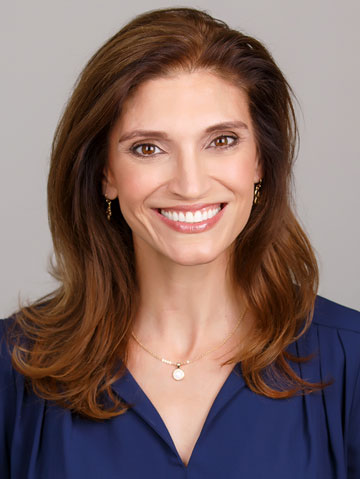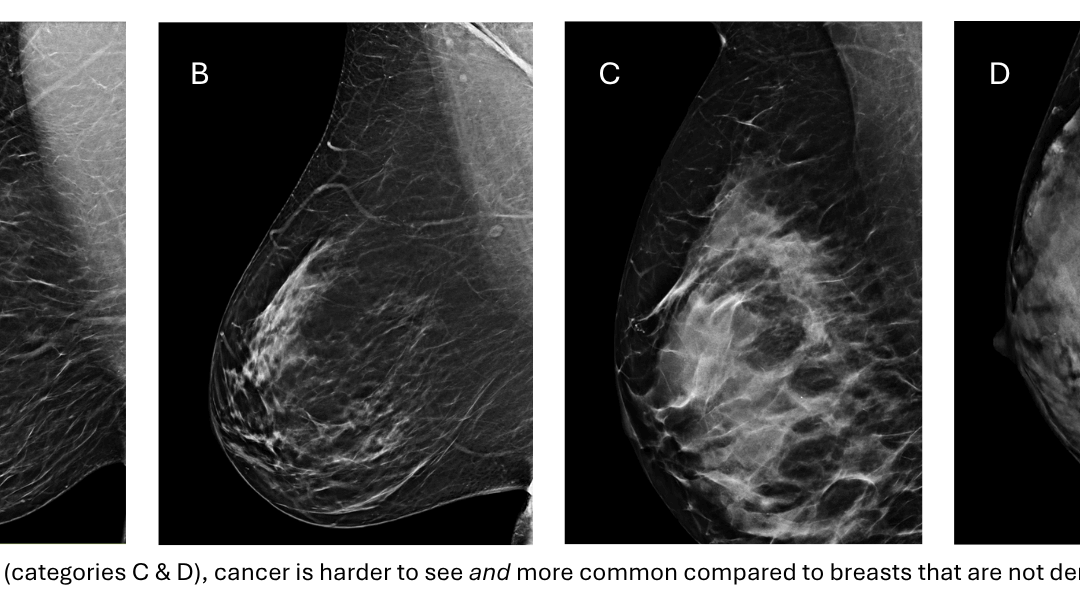There is a lot of confusion about what dense breasts are and why they matter so much. When a primary care doctor does a physical exam and tells a patient that her breasts are dense, they mean that they feel dense. But on a mammogram, we’re not asking if the breasts feel dense; we’re asking if they look dense, which has nothing at all to do with how firm the breasts feel.
Instead, we are assessing how much of the breast is made of fat (transparent on the mammogram) versus gland (white clouds on the mammogram). Breasts come on a spectrum, from completely clear to completely cloudy, that we divide into four categories (A-D).
What does it mean to have dense breasts?
There is a lot of confusion about what dense breasts are and why they matter so much. When a
primary care doctor does a physical exam and tells a patient that her breasts are dense, they
mean that they feel dense. But on a mammogram, we’re not asking if the breasts feel dense,
we’re asking if they look dense which has nothing at all to do with how firm the breasts feel.
Instead, what we are assessing is how much of the breast is made of fat (transparent on the
mammogram) vs. gland (white clouds on the mammogram). Breasts come on a spectrum from
completely clear to completely cloudy that we divide into four categories (A-D).
Why do dense breasts matter?
Dense breasts are important for two reasons. First, that density can hide things. It’s harder to
see a mass in dense tissue. That part is more intuitive. But what’s also true is that dense
breasts grow breast cancers more often. A woman who has extremely dense breasts (category
D) has 4-5 times the risk of breast cancer than a woman who has fatty breasts (cat. A), just
because her breasts are dense.
How common are dense breasts? Having dense breasts is normal and common. Around
40% of women have heterogeneously dense breasts (cat. C, partly to mostly cloudy) and 10-
15% have extremely dense breasts (cat. D, completely cloudy).
Why do some women have dense breasts? There are several factors that contribute. Dense
breasts are hereditary–a woman is more likely to have dense breasts if her mother or sisters
have them. Body weight is also a factor. If a woman is very thin, she doesn’t have much fat,
and so her breasts tend to be dense. And if a woman loses weight and her breast size
decreases, her breasts usually become more dense. Some drugs (e.g., tamoxifen) decrease
breast density and others (e.g., hormone replacement therapy) can increase breast density.
Are there additional tests that help for screening dense breasts?
Tomosynthesis (aka, a 3D mammogram) helps to look through dense tissue slice by slice; it’s an
improvement but can still miss things, especially in denser breasts. Adding whole breast
ultrasound increases our detection by around 30% but there can be a lot of false alarms.
Vascular-based supplemental screening with contrast-enhanced mammography (CEM) or
breast MRI has been shown to be much more sensitive. A recent study by Dr. Fiona Gilbert et
al. in The Lancet in May 2025 showed that CEM and MRI found three times as many cancers as
whole breast ultrasound and that the cancers were half the size (i.e., detected earlier = less
treatment needed and better survival.
How do I know if I have dense breasts and whether I need additional screening?
Read your report: breast density is now required to be included in every mammogram report
and patient letter and many will include specific recommendations for additional screening. You
can also ask your radiologist or primary care provider.
If you have questions about breast density or are due for your screening, reach out to Bay Radiology and schedule your mammogram today, early detection can make all the difference.

Dr. Laura Amodei | Bay Radiology


